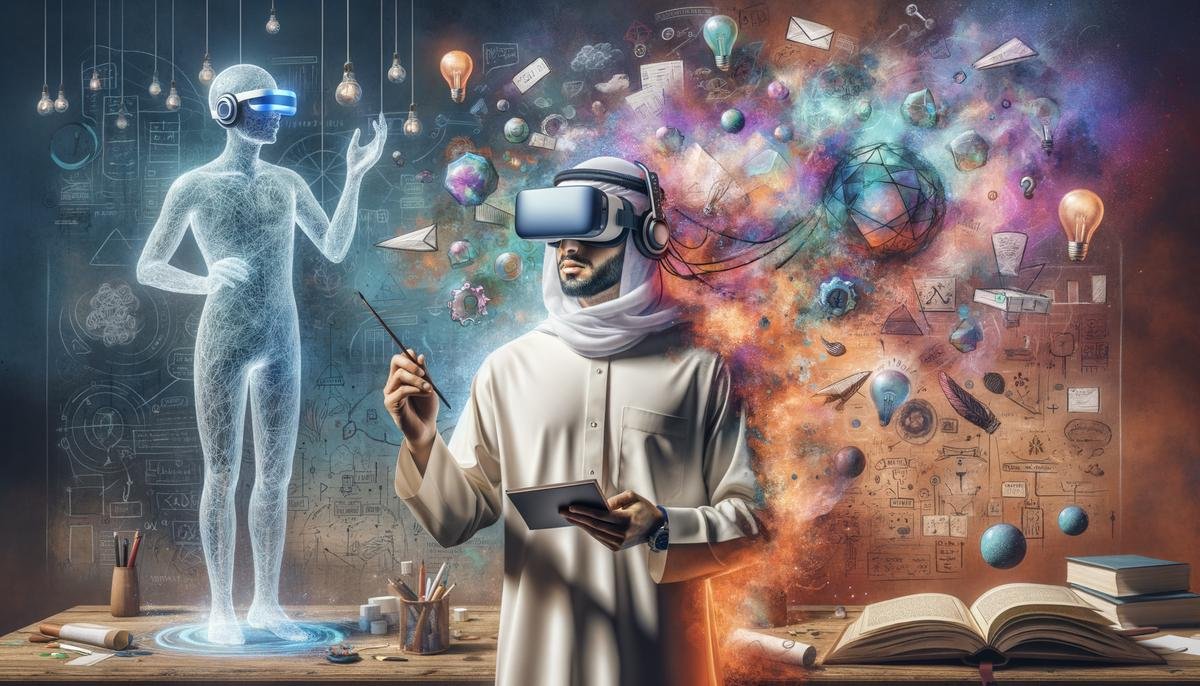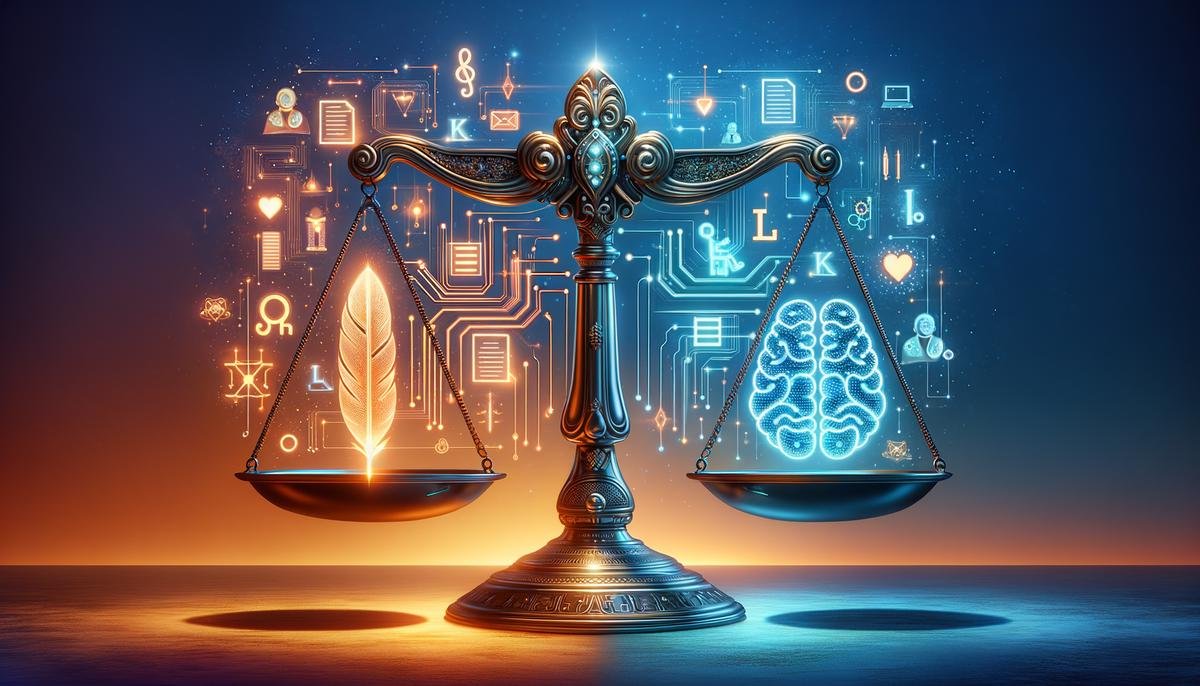Understanding AI in Writing
AI technologies like GPT-3 are revolutionizing the writing landscape. These advanced tools can now generate text that closely mimics human quality, tackling tasks ranging from casual conversation to complex essay writing and even coding. While impressively quick and efficient, AI still lacks the emotional depth and nuanced understanding that human writers bring to their craft.
The capabilities of AI writing tools include:
- Producing content without constant human input
- Handling routine tasks like first drafts
- Performing spell-checking and grammar corrections
However, AI-generated content can sometimes fall short in terms of creativity or subtle contextual understanding.
The ideal approach is to combine AI's efficiency with human creativity. This collaboration has the potential to elevate content quality, with AI handling the groundwork and humans adding the essential personal touch. As technology continues to evolve, writers may need to adapt their processes to remain competitive. It's crucial to remember that the human element remains irreplaceable in forging meaningful connections with readers.
AI as a Co-Creator
AI is rapidly evolving from a mere tool to a dynamic creative partner in the writing process. Its capabilities now extend to generating diverse scenarios and plot twists, effectively serving as an interactive brainstorming companion rather than just a text generator.
In the realm of fiction, AI can assist with world-building by providing ideas for:
- Intricate ecosystems
- Complex societal structures
- Detailed character backgrounds
For non-fiction writing, AI excels in research tasks, allowing writers to focus more on in-depth analysis and audience engagement.
The future of writing with AI emphasizes a symbiotic partnership between technology and human creativity. Writers can harness AI's pattern recognition and data generation capabilities to enhance their work, while maintaining the irreplaceable human touch that infuses writing with emotional resonance.

Impact on the Publishing Industry
AI is reshaping the publishing landscape by streamlining various processes, including:
- Editing
- Formatting
- Basic content generation
This technological revolution leads to faster turnaround times and reduced costs for publishers.
For self-publishing authors, AI offers tools that previously required a team, such as creating compelling book blurbs or engaging social media posts. This democratization of content creation empowers writers to handle more aspects of publishing independently.
New revenue streams are emerging, including:
- AI-driven platforms for serialized stories
- Interactive storytelling experiences
- AI-enhanced marketing strategies for targeting niche audiences
The industry is exploring innovative business models that leverage AI-generated content, such as personalized subscription services or AI-curated anthologies. However, it's important to note that AI complements rather than replaces human roles in publishing, working alongside editors and authors to create a more dynamic storytelling environment.

AI Tools for Writers
Several AI tools are becoming indispensable for modern writers:
- Grammarly: Assists with grammar, punctuation, and style refinement
- Scrivener: Organizes notes, outlines, and drafts efficiently
- Jasper: Generates creative content based on brief inputs
- ProWritingAid: Provides detailed reports on writing style and quality
- Factmata: Aids research by finding relevant, credible sources
- Otter.ai: Transcribes spoken words to text with high accuracy
- Quetext: Detects plagiarism to ensure originality
These tools aim to enhance productivity and expand creative possibilities, allowing writers to focus on their craft while AI handles routine tasks.
Ethical Considerations
The integration of AI in writing raises several ethical concerns:
- Bias: AI models can inadvertently perpetuate existing prejudices or stereotypes. Ensuring diverse and balanced training data is crucial to minimize this issue.
- Originality: There's a pressing need to maintain originality in AI-assisted writing, avoiding plagiarism or uninspired mimicry. Human oversight remains essential in refining AI-generated content.
- Creative autonomy: As AI becomes more prevalent in writing, concerns arise about its impact on human creativity. It's vital to use AI as a complement to, rather than a replacement for, human creative processes.
Ethical practices should guide the integration of AI in writing, ensuring it enhances rather than diminishes human creativity and storytelling.

As AI continues to shape the writing landscape, the core of storytelling remains a fundamentally human endeavor. The path forward involves collaboration between technology and human creativity, enhancing our ability to connect through words while preserving the unique human perspective in writing.
- Diamandis PH, Kotler S. The Future is Faster Than You Think: How Converging Technologies Are Transforming Business, Industries, and Our Lives. Simon & Schuster; 2020.
- Harari YN. Homo Deus: A History of Tomorrow. Harper; 2017.
- Miller AI. The Artist in the Machine: The World of AI-Powered Creativity. MIT Press; 2019.
- Susskind D. A World Without Work: Technology, Automation, and How We Should Respond. Metropolitan Books; 2020.
- Kelly K. The Inevitable: Understanding the 12 Technological Forces That Will Shape Our Future. Viking; 2016.
- Shane J. You Look Like a Thing and I Love You: How Artificial Intelligence Works and Why It's Making the World a Weirder Place. Voracious; 2019.




